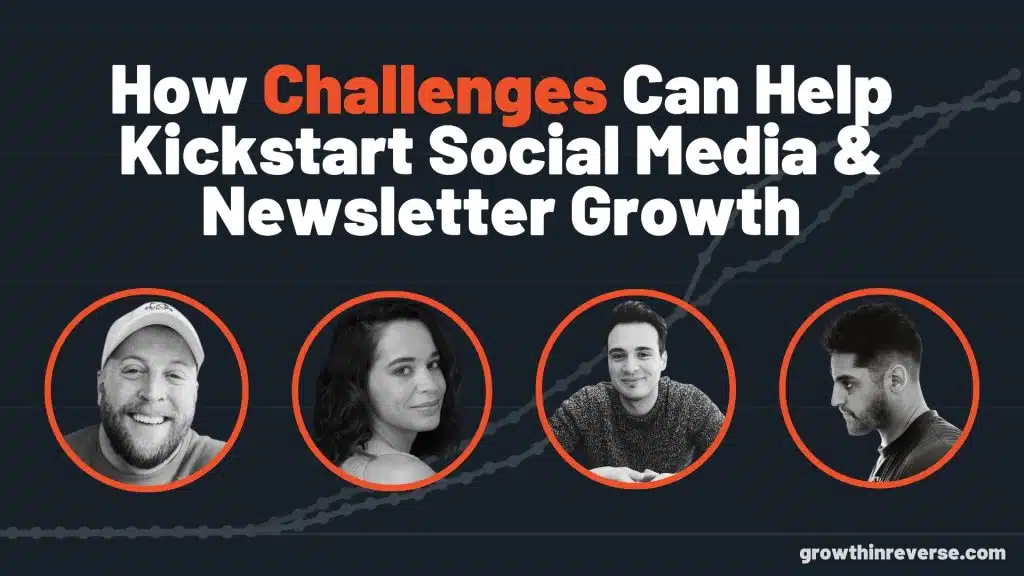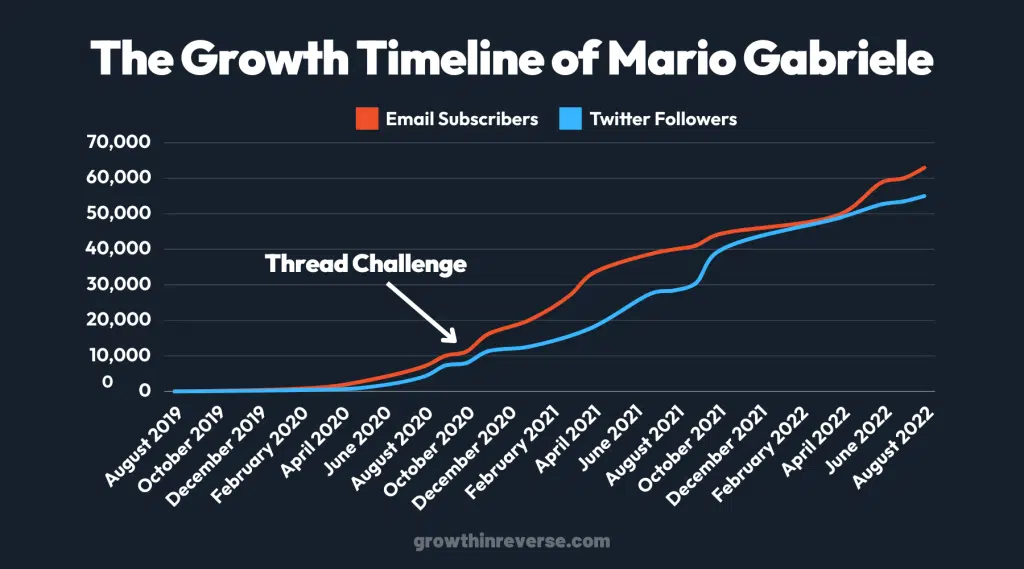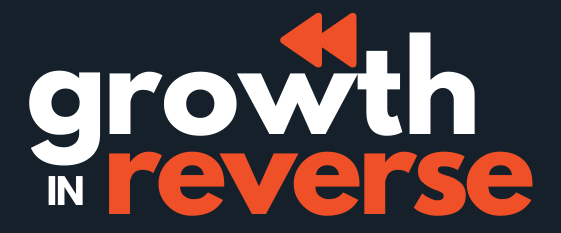I recently shared 3 commonalities I’ve found with almost every creator I’ve researched. If you missed it, the most successful creators all seem to:
- Put out good content
- Show up consistently
- Understand the power of connections
I went in-depth about point number 3 in that recent edition here.
Today I’m going to share a growth lever that helps accomplish numbers 1 and 2 in a combined effort.
And it’s brought in some impressive results from a few creators:
- One added over 2,500 followers in 30 days
- Another gained over 7,000 subscribers in 50 days
- And yet another added over 6,500 subscribers and 250k pageviews on her website in 130 days
So what’s the growth lever they all used to kickstart their growth? Challenges.

Challenges: the Power & Potential
Challenges can be a wildly effective and efficient way to grow your audience and newsletter. But why do challenges work?
These work because most challenges:
- Act as a forcing function to create & publish content with some stake and built-in accountability
- Help you find your voice quickly. If you’re not used to writing every day, you’re going to strengthen that muscle a lot through a challenge.
- They help you see what your followers and readers are interested in based on what posts do well. If you’re not 100% sure what your audience is interested in, a challenge can help you quickly figure that out.
Some of the biggest courses and communities in the creator space began as challenges.
Dickie Bush built an audience of over 300k Twitter followers and a million-dollar business (Ship 30 For 30) on the back of a 30-day writing challenge.
Jay Clouse has a creator business earning $600k+ in annual revenue that includes a sold-out community—plus a YouTube channel approaching 100k subscribers. But a major inflection point in his business and growth was his Tweet100 challenge.
Types of Challenges
Whether you’re declaring a personal challenge publicly, as Anne-Laure did in 2019 with her 100 articles in 100 weekdays—or creating a group challenge like Jay Clouse did with Tweet100, you’re creating something that:
- Holds you (and potentially others) accountable
- Inspires others to join you
- Spurs action
- Builds momentum
Check out these successful challenge strategies.
1. Daily Twitter Thread Challenges
Both Alex and Mario’s early audience growth can be attributed to challenges. Their challenges are very similar, but let’s start with Mario.
Mario Gabriele’s 30 Threads in 30 Days Challenge
| Fun fact: Mario Gabriele’s The Generalist was the first deep dive ever published on GIR, and the inspiration to start it. I couldn’t believe he was earning over $300,000 with a newsletter and had to figure out exactly how this was possible. |
One thing I discovered in my research was how Mario gained some serious growth momentum with a simple personal challenge: write 30 Twitter threads in 30 days.
I love the simplicity of this challenge—but there’s nothing simple about writing 30 attention-grabbing Twitter threads that convert to newsletter subscribers.
Mario never shared how many subscribers the challenge brought in, but at the end of 30 days, he was 2.5k Twitter followers richer: a 2x month-over-month growth rate.
And after the challenge, you can see the growth start moving faster.

Alex Garcia’s 50 Threads in 50 Days Challenge
Alex Garcia used a similar challenge strategy to Mario, but went even bolder:
50 Twitter threads in 50 days.
Why?
He wanted to grow his audience quickly. Others were using Twitter threads to grow fast. So he followed suit.
It’s worth noting that Alex hadn’t launched his Marketing Examined newsletter yet. He’d only created a sign-up page. But he knew he wanted to attract a specific audience who’d want to read it once launched.
So with that in mind, Alex added 2 key constraints for his 50-threads challenge:
- It had to be a longer piece that worked as a Twitter thread
- The topic had to be about growth marketing (the topic of his yet-to-launch newsletter)
Sure enough, he published 50 threads in 50 days. And the challenge strategy worked.
Alex went from 500 to 40,000 Twitter followers over those 50 days—that’s almost 800 followers every day.
And he went from 2,000 to 9,000 subscribers for a newsletter that hadn’t even published it’s first edition.
And from what I can see, the challenge helped him in some other important ways:
- Forcing himself to learn about the industry and find interesting insights to share
- Improve his writing skills
- Learn what content resonates with the audience he was building
2. Jay Clouse’s Tweet100 (100-day Twitter Challenge)
I haven’t done a deep dive on Jay Clouse yet, but he is a more than adequate candidate: his Creator Science newsletter has more than 60k subscribers.
But he started at zero like everyone else.
Back in 2021, Jay noticed that the more he tweeted, the more success he had on Twitter.
It sounds simple and obvious…
But he needed a challenge to help him maintain consistency, so he created a 100-day challenge called Tweet100.

But did it work?
In 100 days, Jay gained…
- 1620 new followers
- 16% growth
It’s modest-yet-respectable growth no doubt.
Jay made Tweet100 a free, public challenge and even included a leaderboard: as long as you tweeted with the #tweet100 hashtag, you’d be included in the rankings.
This challenge was also the precursor to Jay’s successful creator community. He initially created a community in Circle for everyone to chat about the results they were having, and hold each other accountable.
This has morphed into what’s now called The Lab which has ~200 members (including me!) with an annual fee of $1,999.
By making it free and public, Jay maximized the number of people who would join. But the smartest part was including the hashtag. Not only was that pivotal in creating the Tweet100 leaderboard, but it was also critical in creating virality.
It might be the best use of a hashtag when it comes to creator growth that I’ve seen.
3. 100 Articles in 100 Days
A challenge doesn’t have to involve social media, and I want to share one more example with you.
Anne-Laure Le Cunff writes a newsletter called Maker Mind, where she combines entrepreneurship topics with neuroscience.
In July of 2019, Anne-Laure challenged herself to publish 100 articles on her blog in 100 days. (130 days if you count the weekends – she is a mindfulness researcher after all).
Anne-Laure has mentioned that she doesn’t like letting people down, so announcing this challenge publicly made her really want to stick with it.
She set aside 1-2 hours every morning to write to make sure that nothing else on her schedule got in the way.
And she shared all of her progress in public, which thinking back on the last 3 examples seems to be another ingredient to this: public accountability.
In the first 63 days of this challenge, Anne-Laure posted on Indie Hackers that she had crossed 2,000 subscribers and had 85,000 visits to her website.

By the time the challenge was over, she had quite the showing:
- 6k email subscribers with an average of 50-60% open rate
- 250k pageviews on her website
- 100 articles written
- She made the front page of Hacker News 4 times
Kickstarting her growth this way has paved the way for a successful newsletter with more than 100k subscribers at this point.
Creating Your Own Challenge
You don’t need to go public with your challenge, but if accountability and knowing people might be watching helps you, then I think it can be beneficial.
If you’re looking for growth on social media or your newsletter, then a more public-facing challenge can be helpful. But you can also do this behind the scenes.
If your content works this way, maybe you challenge yourself to write one issue of the newsletter every day for the next 30 days. You’ll have more than 6 months of newsletter issues ready to go so you can focus on growth.
Or write 30 LinkedIn posts in 30 days before you post them publicly. That way they are ready to go so you can take the pressure off of posting daily, just like Austin Belcak did.
No matter what you choose, challenges can be a great forcing function to get a bunch of work done in a specific amount of time.
Group Challenges
These can also be done with a group of people holding each other accountable. You can find a few other people working on growth and working together to complete a challenge.
Because I love this growth lever so much, I’m trying to incorporate this into Growth In Reverse Pro, a community centered around growing your newsletter.
That’s one of the reasons I created Growth In Reverse Pro, to help people come together and work on growth at the same time.
We’re going to start doing group challenges here soon. It’s not for everyone, but if you’re interested you can apply here.


